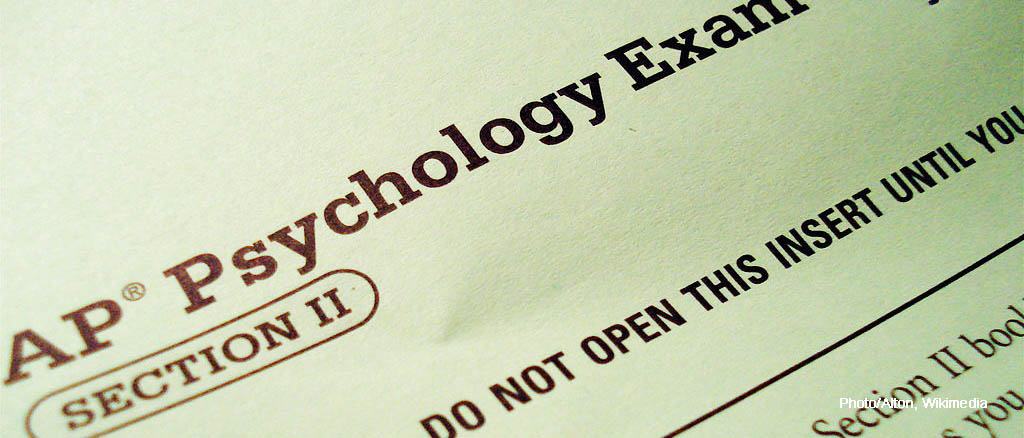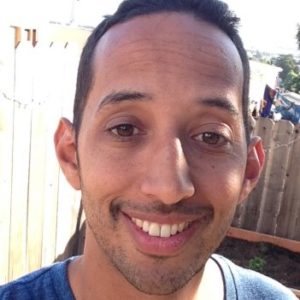
Getting personal with higher ed research
Once a student in Advanced Placement classes, Pullias research assistant Suneal Kolluri now studies the AP program.
Abstract | Full article HTML | Full article PDF
 Eighteen years ago, Suneal Kolluri was a senior at Homestead High School in Cupertino, Calif., taking a few Advanced Placement classes to earn college credits. In many ways, he became a success story for the AP program. He pushed himself, passed all four of his tests, and ended up getting his bachelor’s at the University of California, Los Angeles, then his master’s at Stanford.
Eighteen years ago, Suneal Kolluri was a senior at Homestead High School in Cupertino, Calif., taking a few Advanced Placement classes to earn college credits. In many ways, he became a success story for the AP program. He pushed himself, passed all four of his tests, and ended up getting his bachelor’s at the University of California, Los Angeles, then his master’s at Stanford.
“How hard the AP classes were really helped,” Kolluri said about his high school experience. “They were a lot more work than my other classes, and using that to get a sense of the college workload was really helpful.”
Now, as a research assistant at the Pullias Center and a PhD candidate at the USC Rossier School of Education, Kolluri looks at AP from a different angle. And despite the ways AP benefited him as a teenager, he has mixed feelings about the program as a whole today.
“I think the space the AP program creates for students to engage in rigorous learning experiences about something they’re passionate about is great,” Kolluri said. “You want kids struggling, thinking, working hard, preparing, and doing it with topics they care about. That said, I don’t know that AP is the best way to do it. AP creates a lot of externalities that are problematic to achieve equal opportunities for all students.”
What are some of those problematic issues? For one, the AP track tends segregate students by race, with mostly white and Asian students participating in the program in schools with diverse ethnic populations. In schools with high populations of black and Latinx students, the AP courses are often poorly taught—leading to low passing rates on the tests.
Kolluri’s perspective on AP programs has also been informed by the decade he spent teaching in public and charter schools in the Oakland area, before starting his PhD program. Both of those schools had a policy against grouping students by ability, so all students in each grade took the same classes, instead of being tracked into AP or remedial work. The positives aspects of that experience made an impression on Kolluri.
“Teaching those students showed me it’s certainly possible to challenge everyone in the same room, but most schools aren’t doing that,” Kolluri said. “Instead, there’s a lot of tracking, which often separates students along income and racial lines and exacerbates existing inequities.”
Last month, the first of Kolluri’s research on Advanced Placement was published in Review of Educational Research. Titled “Advanced Placement: The Dual Challenge of Equal Access and Effectiveness,” the paper takes stock of more than 50 studies about the AP program to see if AP classes can attract a more equitable and diverse population of students without sacrificing its rigor and effectiveness.
The answer, Kolluri says, is still unknown.
“Without a doubt, more students of color are taking AP classes today than when the program began,” Kolluri said. “But many of those students aren’t actually passing the tests and earning college credits. And taking AP classes doesn’t necessarily seem to be helping students succeed once they get to college.”
Kolluri summarized his findings in an op-ed for The Washington Post, titled “Seven things research reveals—and doesn’t—about Advanced Placement.” His research was also picked up by The Chalkbeat, in an article that highlighted the still-persistent gaps in research: More students are taking AP exams, but researchers don’t know if that helps them.
Kolluri’s continuing research aims to fill in some of these gaps. He is currently working on a paper that looks at two high schools in low-income neighborhoods that have, despite challenges, managed to create successful AP programs for their students.
“I’m interested in where the AP program is working, and how it’s working, and trying to understand how two schools with similar students can take radically different approaches and both show improvements in important metrics, like overall participation and AP test scores,” Kolluri said. “My intention is that one of these cases might give us some insight regarding how the AP program can meet its goals for both equity and effectiveness.”
Abstract | Full article HTML | Full article PDF
Kolluri, S. (2018). Advanced Placement: The dual challenge of equal access and effectiveness. Review of Educational Research. https://doi.org/10.3102/0034654318787268